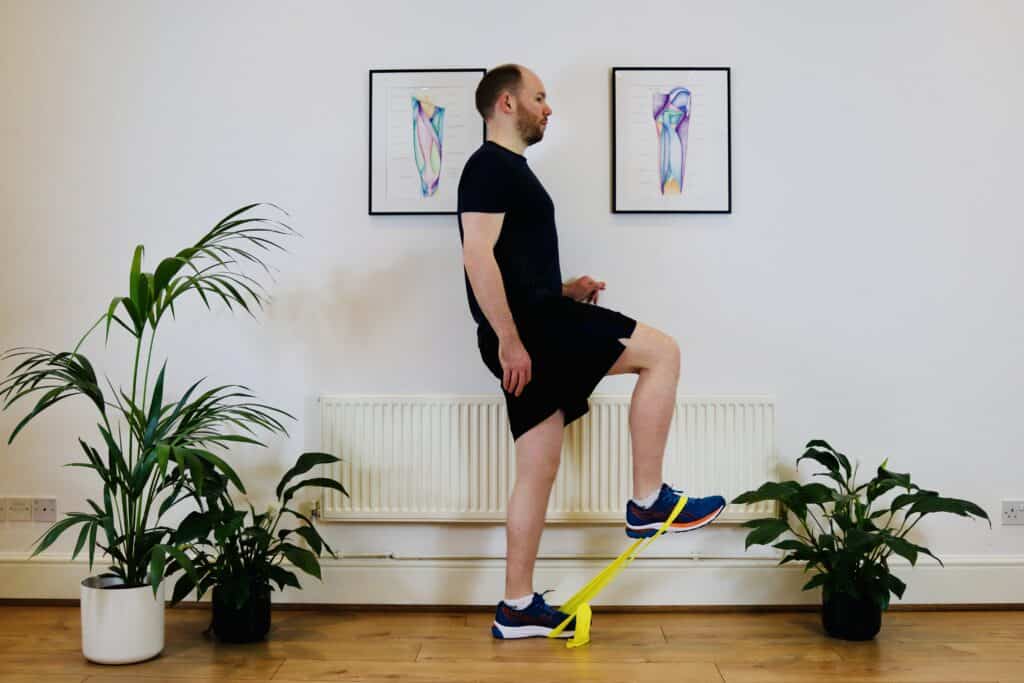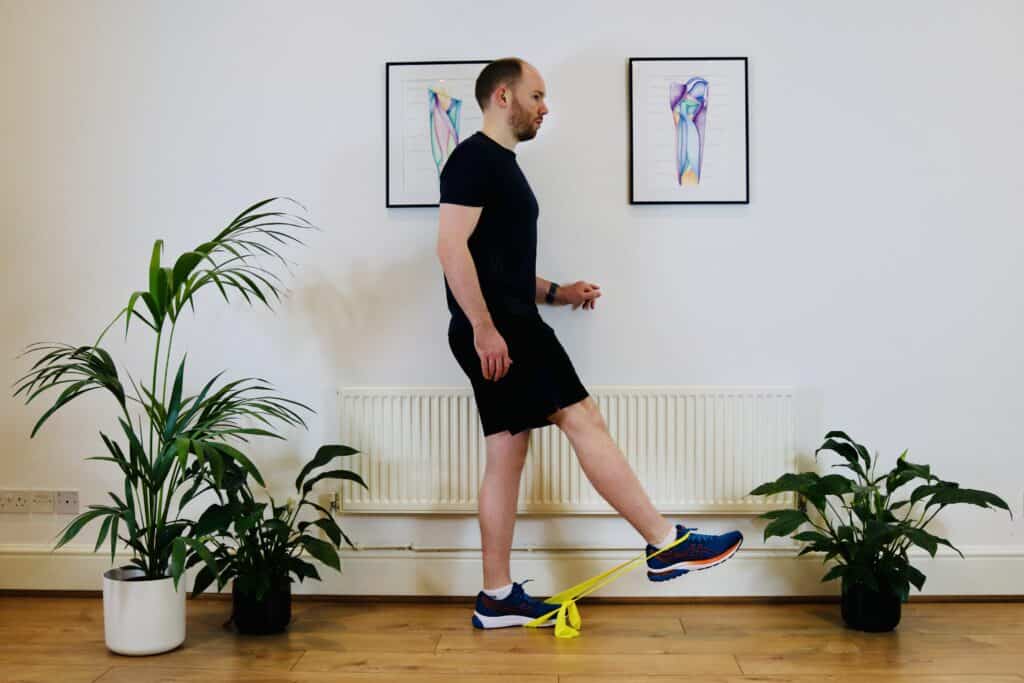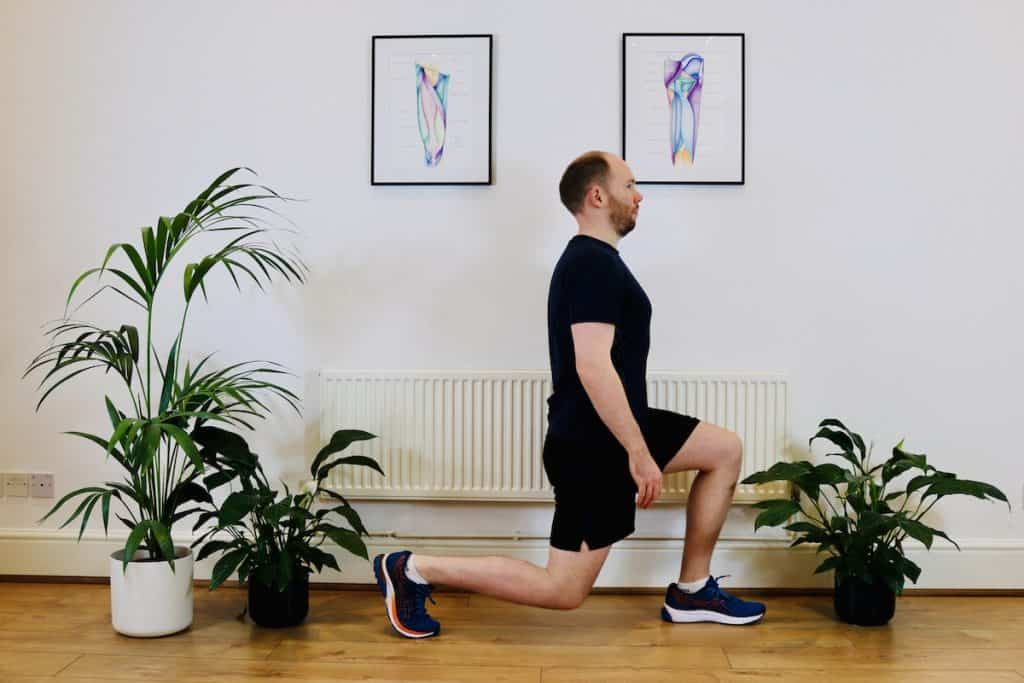Hip Flexor Pain Running
- Best Asics Shoes for Flat Feet - October 25, 2024
- Best Running Shoes for Flat Feet - October 22, 2024
- Posterior Tibial Tendonitis - October 21, 2024
Hip pain is common among regular runners, whether recreational, competitive, or elite. Hip flexor pain refers to pain at the front of the hip, in the hip flexor tendon.
It typically refers to one or all of 3 specific muscles and their tendons: iliacus, psoas, and rectus femoris, the primary hip flexors.
However, hip flexor pain can also be related to other nearby structures, such as the iliopsoas bursa, which can reproduce similar pain in the same location and become painful from similar causes.
Differential Diagnosis
As there are many causes of hip pain, getting the correct diagnosis is essential for an effective management and rehabilitation plan.
Three primary diagnoses are the most common if we only consider running-related pain at the front of the hip: hip flexor tendonitis, snapping hip syndrome and femoral neck stress. These three diagnoses need different management and rehabilitation, so correct diagnosis is essential.
For example, femoral neck stress fractures are common with running but seen more frequently with endurance runners. It’s often related to increased running volume and may be linked with low body weight and poor bone health.
Early management of this injury will be completely offloading the leg using crutches and being non-weight-bearing for several weeks. Other common running-related fractures include Stress Fracture of the Shin, Navicular Stress Fracture, and 5th Metatarsal Fracture.
Hip flexor pain is more common amongst faster, short-distance runners, such as sprint athletes, as more hip flexion is required at faster speeds. Usually, you don’t need to stop running with this condition.
Hip Flexor Pain Symptoms
Symptoms are felt around the crease at the front of the hip and can be felt during or after running. Depending on the severity and irritability of the injury, it may also be felt when walking and sometimes with compressive positions such as a deep squat position.
Some people may feel cramping or spasms of these muscles, and in more severe cases, it can also be challenging to go up stairs or stand up from a chair. Sometimes, this injury can be confused with Snapping Hip Syndrome, which can also affect the hip flexor.
Hip Flexor Pain Running: Who does it affect?
When related to running, hip flexor pain is most often seen with faster, shorter-distance runners such as sprinters and rarely seen with longer-distance and endurance runners. So what is the difference, and why can sprinting cause hip flexor pain?
First, we know from research on running biomechanics that the hip flexor complex of muscles works most during the swing phase of the running gait cycle. They work much less during the stance phase (Lenhart et al, 2014). Major differences exist between the swing phase of a sprinting runner and a slower runner.
Sprinting
In this image, the runner is sprinting. The swing phase is the phase of running where the leg is brought forward, and it starts as the toe leaves the ground behind the body and finishes with the knee high in front of the body. You can see this runner has a high knee in front of them at the end of the swing phase, and the leg finishes with the hip extended, far behind him.
- When sprinting, the runner’s cadence, or step rate, is quicker; therefore, the swing phase is faster.
- The hip flexor muscles must work with more force and power for a faster swing phase.
- When sprinting, the stride length is longer, and the hip is more extended at the start of the swing phase.
- Therefore, the hip flexor muscles must work through a greater range of movement.
- When the hip is extended, there is more compression and stress on the hip flexor muscles.

Endurance Running
In this image, these runners are participating in an ultra-marathon. You can see that their swing phase is different from that of the sprinter above. They have lower knees at the end of the swing phase and less hip extension at the start of the swing phase.
- When running slower, the runner’s cadence, or step rate, is lower, and the swing phase is slower.
- The hip flexor muscles can work with less force and power to generate the swing phase.
- When running slower, the stride length is shorter, and the hip is less extended at the start of the swing phase.
- The hip flexor muscles, therefore, have a smaller range of movement to work through.
- As the hip is less extended, there is less compression and stress on the hip flexor muscles.

Treatment and Exercises
As mentioned above, treatment for hip flexor pain is most effective when active. A short rest or reduced activity may be needed if the area is excruciating and irritated. In addition, hands-on treatments such as massage can help with pain in these early and more painful phases of recovery.
To resolve the issue, if it relates to the muscles and tendons of the hip flexors, it is to start strengthening or loading these muscles. Early strengthening may start with the hip in some degree of flexion and adduction or a neutral alignment, but avoid hip extension and abduction to avoid aggravation.
These positions should be avoided as they can compress the tendons of the 3 hip flexor muscles, which can aggravate pain. In later stages of rehabilitation, a gradual introduction of strengthening through extension and abduction can be done. Here are 3 exercises that strengthen the hip flexor from early stage to later stage rehab.
1. Hip Flexion Bent Knee

Standing with a resistance band around your ankles and keeping your bent knee, flex from the hip to raise your knee forward. This can be progressed by raising the knee higher or increasing the band’s resistance.
2. Hip Flexion Straight Leg

Standing with a resistance band around your ankles and keeping your knee straight, flex from the hip to move your leg forward. This can be progressed by raising the leg further or increasing the band’s resistance.
3. Hip Flexion from Lunge

Starting in a lunge position, come up into standing, bringing the back leg forward to finish in hip flexion, as in the first image. This can be progressed by using a resistance band around the ankle of the back leg.
In addition to strengthening the hip flexor muscles, strengthening surrounding muscles can be very helpful. The adductor longus can also work as a hip flexor, so should be incorporated into rehab programs. Additionally, having good strength through the abdominal and trunk muscles can prevent the hip flexor muscles from working excessively. The hip flexors can support these muscles’ functions and compensate for poor stability through complex movements such as running.
Return to Running
This is a common injury in runners who will be keen to resume their regular training as soon as possible if they need to modify training for their recovery. Returning a runner to their usual program should be gradual.
Great attention should be paid to how the runner feels during, straight after, and the day after runs. Minor symptoms, such as hip flexor soreness and stiffness, with no pain, can indicate that the individual is at the limit of their capacity.
Progressing further at this time may not be appropriate. Particular caution should be taken with incline running, higher speeds, and the volume of work done at high speeds and on an incline.
_______________________________________
Related Articles:
Hip Pain Location Chart – Causes of Outer Hip Pain
We offer Online Appointments for £60 and Face-to-Face appointments for £85 in our clinics.
